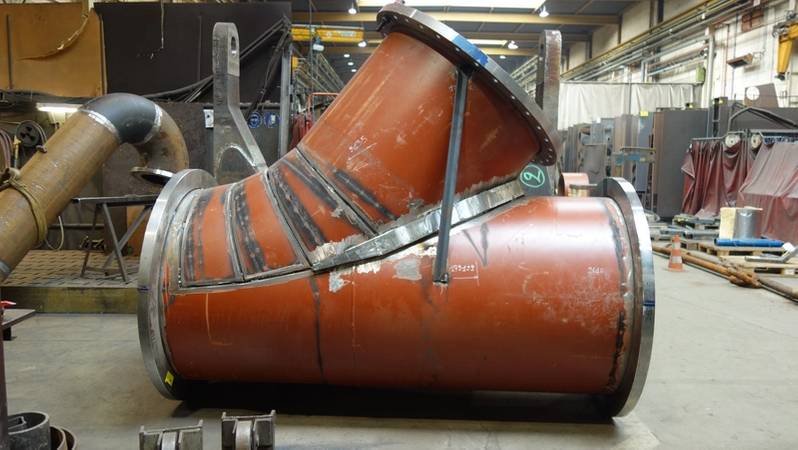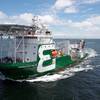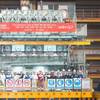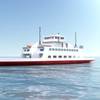Robotic Pipe Cutting Provides the Answer for JDN Group
While the average person may have a little trouble placing the name Jan De Nul, as in “JDN Group”, that’s not necessarily the case throughout parts of Europe and in nautical circles. There the Belgium-based company is known for its dredging capabilities and high-profile projects in Dubai and the Suez Canal.
In addition to dredging, JDN is building a reputation as a global player in its other business segments: offshore services, civil engineering, and environmental. Today, the company continues to invest heavily in all areas of the business. And in 2015 JDN further strengthened its hydraulic engineering expertise and foundation building expertise and capabilities through the acquisition of foundation expert Soetaert NV.
Design to execution
One key strategy toward the success of any business is to make the customer’s life easier. And JDN has embraced this philosophy. In the past work was focused on following customer specifications. Today, the company has adopted a consultative approach and more and more of its customers are turning to JDN for the answers.
The company’s multidisciplinary teams follow the integrated approach – everything from design to execution is being taken care of in-house. A customer always gets a creative and innovative solution tailored to their specific needs; and some projects even include maintenance and financing. This endeavor is supported by a large design and engineering department serving all areas of interest.
New technology investments
An important part of JDN’s business strategy is continuous investment into new technology and equipment. This is best illustrated by examining its fleet of more than 85 ships, 47 of which were built between 2007 and 2013.
While bigger isn’t necessarily better that doesn’t hold true for large-scale international dredging projects where such an asset cannot be underestimated. And bigger has become JDN’s specialty.
The group works with world’s largest trailing suction dredgers, the sister ships Cristóbal Colón and Leiv Eiriksson with hopper capacity of nearly 500,000 square feet and depth range of over 500 feet. JDN also utilizes two of the most powerful subsea rock installation vessels, the Simon Stevin, and the Joseph Plateau.
Advancing in-house cutting
JDN remains one of the few dredging companies that design and builds their vessels and equipment. And according to Workshop Manager, Jose Pycke, there are good reasons for this.
“First of all, you have better control over the delivery times and there is also the quality factor,” explained Pycke. “We produce many complex parts of unusual shapes which requires a great deal of know-how. We believe we can manufacture these complex parts best by ourselves. Furthermore, this knowledge isn’t something we want to outsource. Its best for us to maintain keep this in-house.”
More than 70 operators work in JDN’s production department which is divided into a material preparation area, welding workshop and machining workshop equipped for processing of very large parts. The largest vertical lathe is capable of handling parts up to 18 feet in diameter.
Challenge and solution
In the past, JDN manufactured parts on an oxyfuel cutting machine. While the machine served its purpose, it did not include the capabilities to prepare weld seams. This limitation introduced extra time and cost into the process.
“Materials thicker than 25 mm had to be cut with much slower oxyfuel technology,” explained Pycke. “Furthermore, we were forced to cut the bevels manually with a hand torch or an angle grinder, and that added a lot of time.”
JDN found that MicroStep delivered a complete cutting solution. With roughly 10 x 40 feet of cutting area for plates up to 6 inches thick and a zone for cutting pipes with a robot situated along the outer side of the machine guidelines, the MicroStep machine is capable of processing tubes up to 80-inch diameter with a wall thickness of more than 3 inches.
The challenge was to ensure cutting and positioning of pipes in the entire required range of diameters (about 4 – 80 inches) and thicknesses and, at the same time, to propose a technical solution that would allow the most convenient manipulation of pipes while requiring minimal construction interventions on the production floor.
The solution was an oxyfuel torch on a robotic arm. This provided high movement flexibility and was not limited by the height of the gantry. This makes it possible to place the pipe cutting tracks and supporting rollers on the floor level without the need to “sink it” underground.
For compensation of possible deviations of the pipe shape, a laser scanner integrated in the torch holder is used to scan the surface of the pipe where the cut will be. If any deviations are detected, the cutting program is automatically adjusted.
The use of a scanner in combination with a sophisticated robot movement control (compensating for the existing inaccuracies of the robot’s construction) and the dedicated 3D CAM software mCAM provides accurate openings and contours of different shapes. The pipe cutting zone is equipped with a safety light barrier that turns on together with the robot to ensure safe operation.
Results
“First of all,” explained Pycke, “because weld preparation is now done automatically and in one step, the plasma/oxyfuel cutting machine with the integrated robot arm has resulted in considerable time savings. This has also increased quality. As to the pipe cutting, not only has our reach been increased, but we can also cut any shape. In terms of flexibility, we have improved significantly.”
 (Photo: United Precision Services)
(Photo: United Precision Services)
 (Photo: United Precision Services)
(Photo: United Precision Services)
 (Photo: United Precision Services)
(Photo: United Precision Services)












